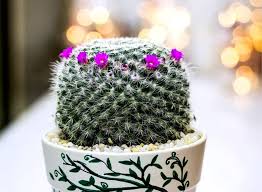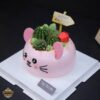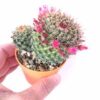The Art of Feng Shui Stone Carving: Bringing Harmony and Good Fortune into Your Life

Stone carving is one of the oldest and most revered forms of art in human history. Across cultures and time periods, stone has been used to create everything from monumental sculptures to delicate, intricate carvings. In the context of feng shui, stone carving takes on an even deeper significance, combining artistic expression with spiritual and energetic purposes. The practice of feng shui stone carving is grounded in ancient Chinese philosophy and aims to balance the energy, or Chi, in one’s surroundings. These carved stones, whether they are statues, figurines, or ornaments, are believed to influence the flow of energy, attract good fortune, and provide protection.
In this article, we will explore the rich history and significance of feng shui stone carving, the various types of stone carvings used in feng shui, the symbolic meanings of different carvings, and how you can incorporate these beautiful works of art into your home or office to enhance prosperity, health, and harmony.
1. Understanding Feng Shui and Its Connection to Stone Carving
Feng shui, which translates to “wind and water,” is an ancient Chinese practice that seeks to create a harmonious environment by aligning the flow of Chi, or life force energy, with the natural world. Feng shui is based on the belief that everything in our environment has an energy, and by arranging the elements—such as furniture, colors, and objects—correctly, we can improve the quality of life and attract positive energy.
Stone, in feng shui, is considered a grounding and stabilizing element. It represents the earth element, which symbolizes strength, stability, and support. Stone carvings are particularly valuable in feng shui because they combine both the natural power of stone with the artistry and intentionality behind the carving process. The energy of the stone is believed to be enhanced through the artistic form, which can influence various aspects of life, including wealth, health, relationships, and protection.
2. The History and Evolution of Stone Carving in Feng Shui
Stone carving has a long history that spans thousands of years, with roots in ancient civilizations around the world. In China, stone carving emerged during the Shang Dynasty (1600-1046 BC) and continued to evolve over time, particularly during the Tang Dynasty (618–907 AD) and the Song Dynasty (960–1279 AD). Early stone carvings were used for practical purposes, such as tombstones, memorials, and architectural decorations. However, as the art form progressed, it became more symbolic, with intricate carvings used for spiritual and metaphysical purposes.
The use of stone in feng shui gained prominence during the Han Dynasty (206 BC–220 AD), when the Chinese began to incorporate symbolic stone carvings into their homes and tombs to promote balance and positive energy. The belief was that these carvings could protect against negative energy, enhance prosperity, and bring good fortune.
Today, stone carving in feng shui is widely practiced, with artisans creating everything from small, decorative carvings to large statues. These carvings are made from a variety of stones, each with its own unique properties and energetic qualities.
3. Common Types of Stone Carvings in Feng Shui
There are various types of feng shui stone carvings, each with its own symbolism and purpose. These carvings can range from small figurines to large sculptures, and they are often displayed in the home, office, or business to enhance specific areas of life. Some of the most popular types of feng shui stone carvings include:
a. Dragon and Phoenix Carvings: Symbols of Power and Harmony
The dragon and phoenix are two of the most powerful and auspicious symbols in Chinese culture, representing masculine and feminine energies, power, and harmony. The dragon is a symbol of strength, vitality, and good fortune, while the phoenix represents rebirth, transformation, and peace. When carved from stone, these figures are believed to balance the yin and yang energies, fostering both personal growth and harmonious relationships.
A dragon and phoenix carving can be placed in the southern area of the home or office to attract career success, prosperity, and good fortune. Together, they symbolize the harmonious balance between opposites, creating an environment where both energy and relationships thrive.
b. Laughing Buddha: Symbol of Happiness and Abundance
The Laughing Buddha, also known as the Happy Buddha or Budai, is one of the most popular stone carvings in feng shui. It is believed to bring happiness, prosperity, and abundance to the home or business. The Laughing Buddha is often depicted with a wide smile, a big belly, and a carefree demeanor, making him a symbol of contentment and joy.
Placing a stone carving of the Laughing Buddha in the wealth corner (southeast area) of the home or office is said to attract financial prosperity and good fortune. It can also be placed near the entrance of a business to welcome positive energy and customers.
c. Money Frogs: Attracting Wealth and Prosperity
The three-legged money frog, also known as the frog with a coin in its mouth, is a powerful symbol of wealth and prosperity in feng shui. This carving is often made from jade, crystal, or other stones, and it is believed to attract money and financial success into one’s life. The frog is typically depicted sitting on a pile of coins or holding a coin in its mouth, symbolizing the abundance of wealth.
A money frog carving should be placed in the wealth corner of the home or office to maximize its positive effects. It is also common to place a money frog near the cash register or safe in businesses to encourage a steady flow of income.
d. Elephant Carvings: Symbol of Protection and Good Luck
The elephant is another highly revered symbol in feng shui. It is associated with protection, wisdom, and good luck. In feng shui, elephants are believed to offer protection from negative energies and to attract positive Chi. They are often depicted with their trunks raised, which symbolizes good luck and the attracting of positive energy.
Elephant carvings made from stone are often placed near entrances, doors, or windows to protect against negative influences. Placing them in the northwest or southwest area of the home or office can also help to enhance authority, promote wisdom, and improve relationships.
e. Fish Carvings: Symbol of Abundance and Success
The fish is a symbol of abundance, prosperity, and good luck in Chinese culture. The fish’s ability to swim freely and multiply is associated with the flow of wealth and the potential for financial growth. In feng shui, a stone carving of fish can be placed in the wealth corner of the home or office to enhance prosperity.
One of the most popular fish in feng shui is the carp, which symbolizes the ability to overcome obstacles and achieve success. Fish carvings are often placed near water sources, such as aquariums, to enhance the flow of Chi and promote a thriving, abundant environment.
f. Chinese Coins: Attracting Wealth and Financial Security
Chinese coins are traditional symbols of wealth, success, and financial security. Carvings of these coins, often tied together with a red ribbon or string, are commonly used in feng shui to attract financial prosperity. The coins are typically inscribed with Chinese characters and the square hole in the center symbolizes the connection between heaven and earth.
Stone carvings of Chinese coins can be placed in the wealth corner or near the front door to invite prosperity into your home or business. Hanging them above the front door is also believed to bring good fortune and protect against financial difficulties.
4. Incorporating Feng Shui Stone Carvings into Your Home or Office
Stone carvings are a versatile and powerful addition to any home or office. Here are some tips on how to incorporate them into your space to enhance energy flow and attract good fortune:
a. Placement Matters
The placement of stone carvings in feng shui is essential for maximizing their positive effects. As mentioned earlier, the wealth corner (southeast area) is ideal for stone carvings related to prosperity, such as the Laughing Buddha or money frog. Elephants and fish can be placed in areas associated with success, protection, or family harmony.
b. Consider the Material
The material of the stone carving can also influence its energy. For example, jade is considered a healing stone, and crystal carvings are thought to enhance spiritual energy. Marble and onyx are often used for their grounding and stabilizing qualities, while rose quartz is associated with love and emotional healing.
c. Keep Your Space Clutter-Free
In feng shui, it is important to maintain a clean, organized space to ensure the free flow of energy. Avoid overcrowding your environment with too many stone carvings. Instead, choose a few carefully selected pieces that align with your goals and intentions.
5. Conclusion
Feng shui stone carving is a powerful art form that blends beauty, tradition, and metaphysical significance. Whether you are seeking to enhance your wealth, health, relationships, or overall well-being, incorporating stone carvings into your space can help to attract positive energy and balance the Chi. With careful selection and thoughtful placement, these carvings can be a powerful tool for creating a harmonious and prosperous environment.

